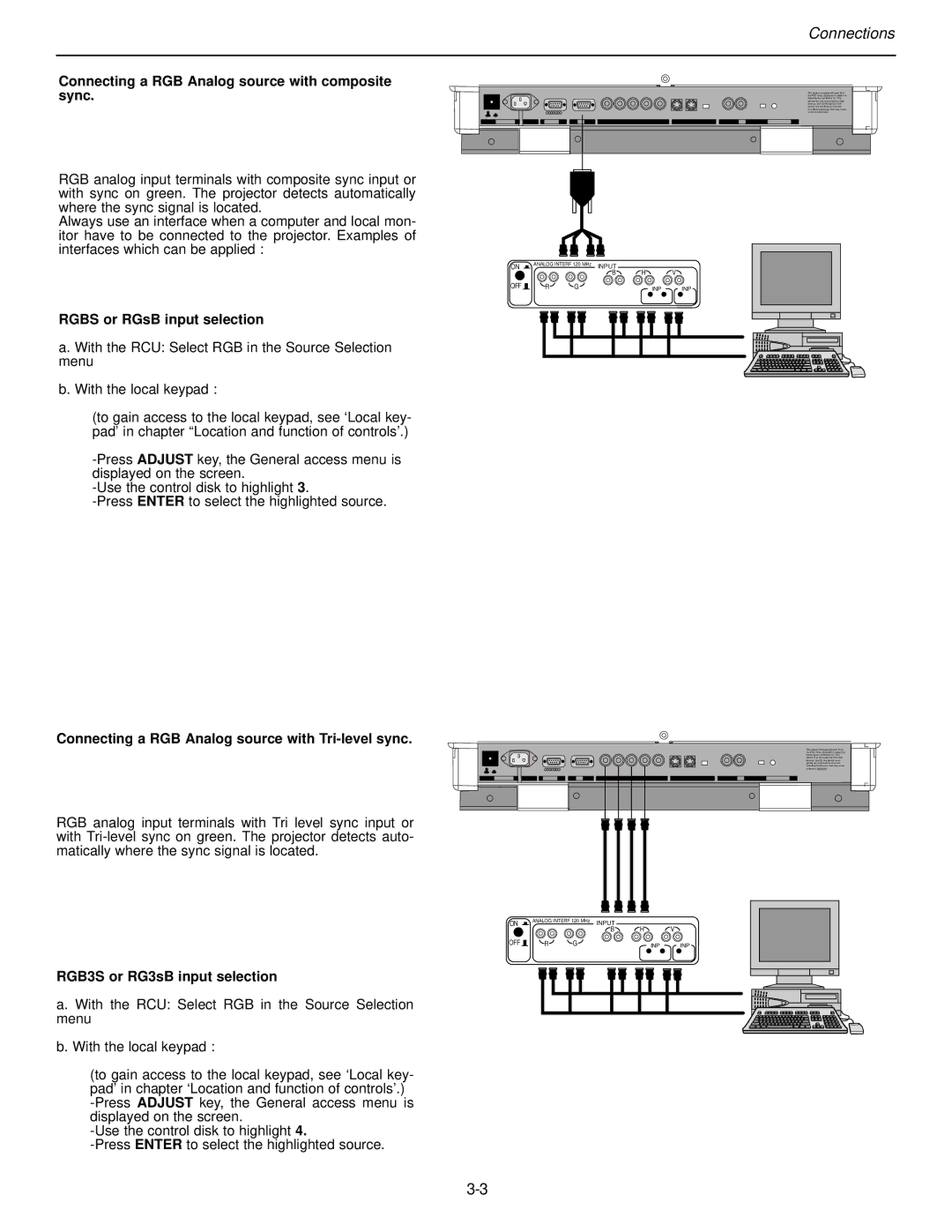
Connections
Connecting a RGB Analog source with composite sync.
RGB analog input terminals with composite sync input or with sync on green. The projector detects automatically where the sync signal is located.
Always use an interface when a computer and local mon- itor have to be connected to the projector. Examples of interfaces which can be applied :
RGBS or RGsB input selection
a. With the RCU: Select RGB in the Source Selection menu
b. With the local keypad :
(to gain access to the local keypad, see ‘Local key- pad’ in chapter “Location and function of controls’.)
Connecting a RGB Analog source with Tri-level sync.
RGB analog input terminals with Tri level sync input or with
RGB3S or RG3sB input selection
a. With the RCU: Select RGB in the Source Selection menu
b. With the local keypad :
(to gain access to the local keypad, see ‘Local key- pad’ in chapter ‘Location and function of controls’.)
This device complies with part 15 of the FCC rules. Operation is subject to following two conditions (1). This device may not cause harmful inter- ference, and (2) this device must accept any interference received including interference that may cause undesired operation.
ON | ANALOG INTERF 120 MHz INPUT | H | V | |
|
| B | ||
OFF | R | G | INP | INP |
This device complies with part 15 of the FCC rules. Operation is subject to following two conditions (1). This device may not cause harmful inter- ference, and (2) this device must accept any interference received including interference that may cause undesired operation.
ON | ANALOG INTERF 120 MHz INPUT | H | V | |
|
| B | ||
OFF | R | G | INP | INP |
